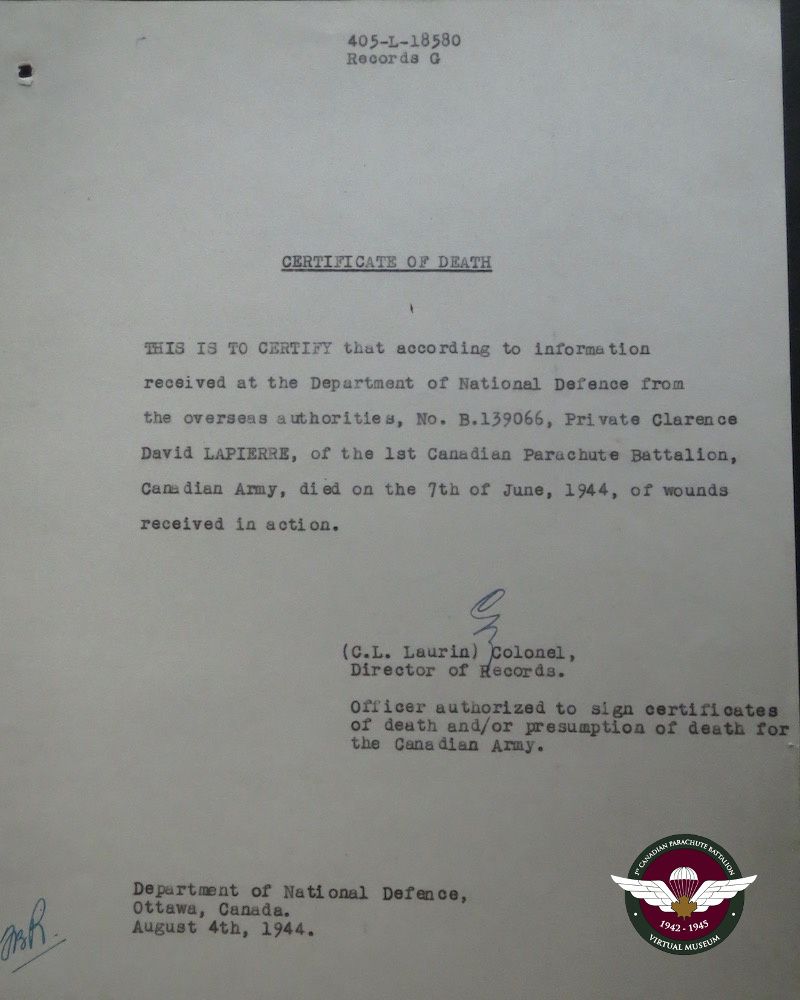Private Clarence David LaPierre
Pte. David LaPierre was born November 9, 1923, in Owen Sound, Ontario. His biological parents were David Booey and Rebeca Courtney but he was adopted right after birth by Marcel and Lillian LaPierre. He was raised in Owen Sound and attended the Owen Sound Collegiate and Vocational Institute. Post-high school, LaPierre was employed as a moulder and produced a variety of cast items for a local business. LaPierre was residing at 1949 8th Avenue East in Owen Sound when he decided to travel to Toronto, Ontario to enlist in the Royal Canadian Infantry Corps on January 21, 1943.
LaPierre completed his basic training at the A10 Canadian Infantry Training Centre at Camp Borden, Ontario and on June 8, 1943, he was transferred to the 48th Highlanders of Canada. Ten days later he disembarked in the UK and was assigned to 4 Canadian Infantry Reinforcement Unit.
On August 6, 1943, LaPierre was transferred to the Queen’s Own Rifles of Canada however his ultimate goal was to become a Paratrooper. He finally got his wish when he was transferred to the 1st Canadian Parachute Battalion on January 17, 1944. LaPierre completed his Parachute Course at Ringway, UK on March 3, 1944, and continued to train with the Battalion in the months to follow in preparation for the invasion of Normandy.
LaPierre parachuted into Normandy as part of Operation Overlord on June 6, 1944. Sadly, the next day he was mortally wounded. This war hero who gave his life for his country can be found resting at Ranville Cemetery, Grave 7, Row D, Plot 1 in Normandy, France.
Sten MkV
Pte. Lapierre would have carried a Sten submachine gun overseas, similar to this one shown below. The Sten can be found in several models, the one pictured here is a Sten MKV, produced for the Paratroopers. It was an inexpensive firearm to produce, costing less than $10.00 per unit. It chambered a 9mm cartridge with a firing rate 550 rounds per minute and an effective range of 100 yards. Also shown is a magazine pouch or bandolier that allowed a soldier to carry an additional 30 round magazines. Courtesy of Collectors Source.
Credit to Ryan McManaman for documentation.
Credit to the Public Library for the Owen Sound Collegiate & Vocational Institute photograph.










